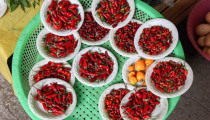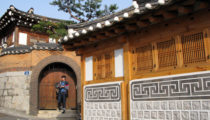June 18, 2009
The Way of Tea: Experiencing the Japanese Tea Ceremony
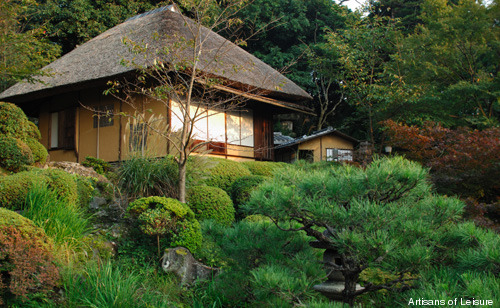
The tea ceremony is one of Japan’s most interesting and enduring artistic traditions. More than a ritual for preparing and drinking tea, the tea ceremony is a means to aesthetic appreciation and social interaction that has had a profound influence on Japanese art, architecture, gardens, cuisine and philosophy.
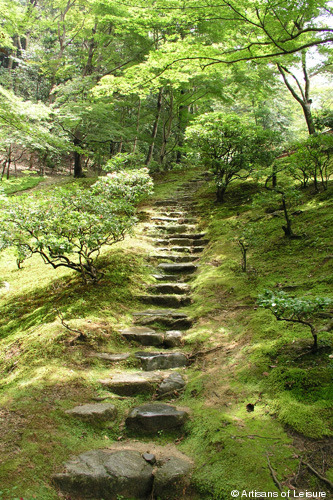
What happens during a traditional Japanese tea ceremony? A formal tea ceremony usually takes place in a chashitsu (tea room), which is typically a small, rustic Japanese structure with tatami floors, a tokonoma (alcove) for displaying scrolls and flowers, and a hole in the floor for the hearth. Guests often walk through a garden to reach the teahouse or tea room, and they remove their shoes before entering through a small door.
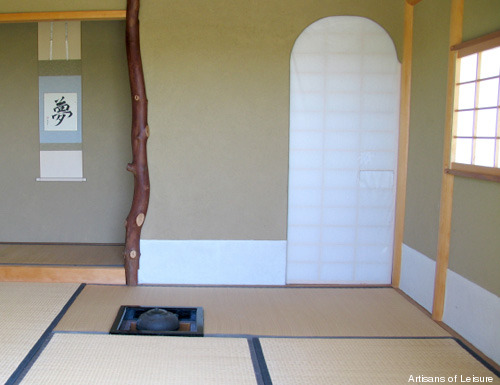
Inside, the host, usually dressed in a kimono, performs a series of choreographed movements in heating the water, washing the utensils, scooping the matcha (powdered green tea) into the chawan (tea bowl), whisking the water and tea into a light froth with a chasen (bamboo whisk), and presenting the tea.
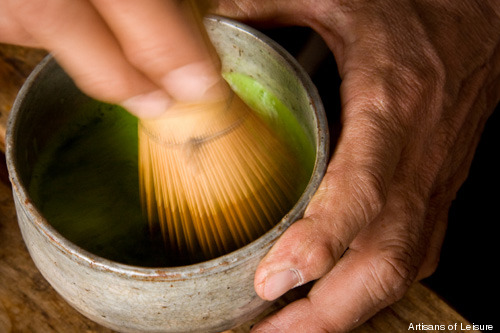
Guests nibble on kashi (sweets), drink both koicha (thick tea) and usucha (thin tea), and praise the aesthetic qualities of the tea bowl.
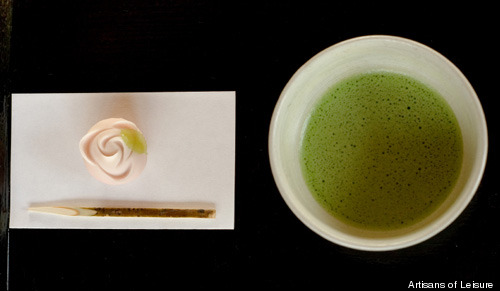
If a kaiseki meal is included in the tea ceremony, it will be served before the tea and the entire experience may take several hours. Less formal tea ceremonies are shorter, often include only usucha and a sweet, and might take place outdoors, typically in a Japanese garden.
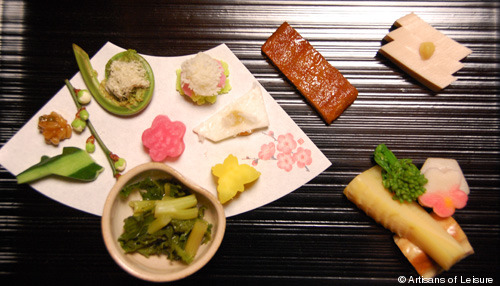
Practicing the tea ceremony is a favorite pastime among the Japanese. However, becoming a tea master requires discipline, dedication and years of study. Tea masters must learn the strictly ritualized movements of the tea ceremony–how to wash the utensils, ladle the water, whisk the tea, fold the chakin (cloth used to wipe the tea bowl), present the tea bowl to guests, and so on. Moreover, tea masters must understand all the elements that come together to create the unique synesthetic experience that is the tea ceremony–different grades of tea, traditional ceramics, bamboo tools, metal teapots, calligraphy, flower arranging, kimono and sweets–and select items appropriate to the season. They must also be well-versed in the architecture and symbolism of the tea room, as well as its care and maintenance.
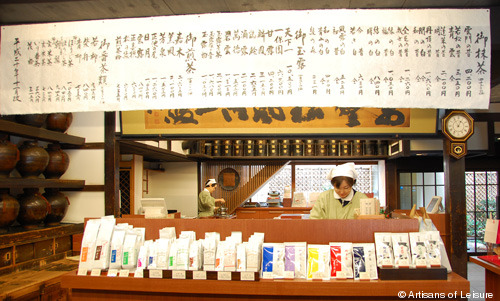
Tea first became popular in Japan in the 12th century, when Myoan Eisai, a Japanese Buddhist monk, brought tea seeds, powdered tea and Zen Buddhism from China to Japan. Eisai established Zen in Japan and introduced tea drinking into Zen rituals. By the 13th century, tea-drinking parties had become popular social events among the samurai and the Japanese nobility.
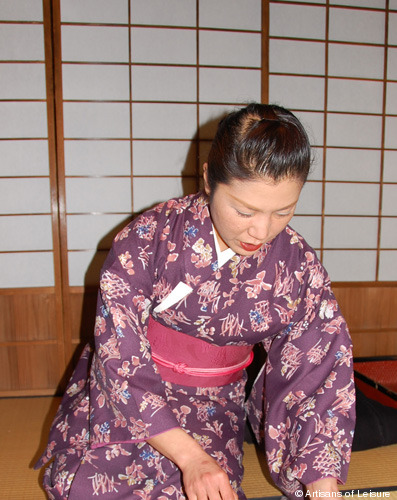
The tea ceremony became increasingly codified over the following centuries and evolved from a Chinese to a Japanese style. In the 15th century, Zen monk Murata Shuko introduced the concept of wabi, which emphasizes simplicity, imperfection, asymmetry, humility and naturalness. Another important tea ceremony concept that became popular around this time is ichi-go, ichi-e (one time, one meeting), based on the idea that life is transient and each tea ceremony is a unique combination of people and experiences that will never be repeated.
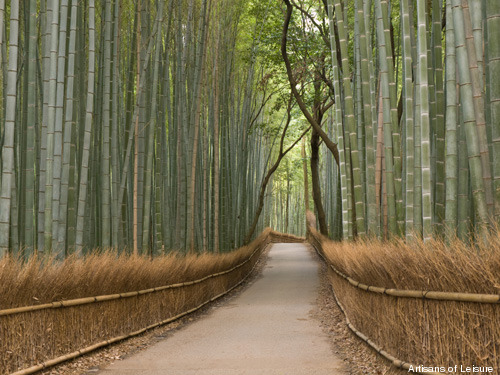
Sen no Rikyu, the most renowned figure in the history of the Japanese tea ceremony, synthesized many of the aesthetic elements of the tea ceremony in the 16th century. He recognized the connection between Zen and the tea ceremony, and perfected a rustic yet elegant style, introducing rough raku tea bowls and nijiriguchi, the small, low entrance that forces guests to crawl into teahouses. Rikyu’s legacy has been long lasting, and his summation of the essential principles of the tea ceremony—wa-kei-sei-jaku (harmony, respect, purity and tranquility)—is a common inscription on scrolls decorating the tea room.
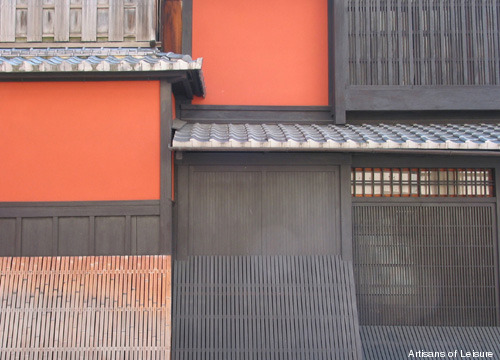
We offer our travelers to Japan many different ways to experience the elaborate sensory world of the tea ceremony–also known as sado, chado (way of tea) and chanoyu (hot water for tea)–and the pleasures associated with it.
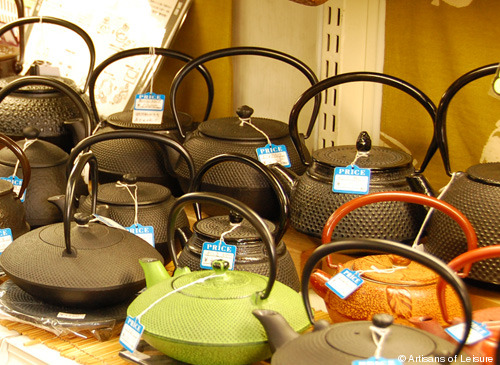
Travelers with limited time might like to experience a brief introduction to the tea ceremony, sip green tea while gazing into a bamboo forest, or visit shops specializing in high-grade matcha (powdered green tea), ceramic tea bowls, bamboo whisks, tea scoops, iron teapots and other tea ceremony accoutrements.
For travelers who want a more immersive experience, we arrange private full-length formal tea ceremonies, cha-kaiseki (tea ceremony meals), lessons at tea schools, visits to teahouses on the grounds of traditional gardens, and visits to tea plantations to see how green tea is grown, picked and processed.
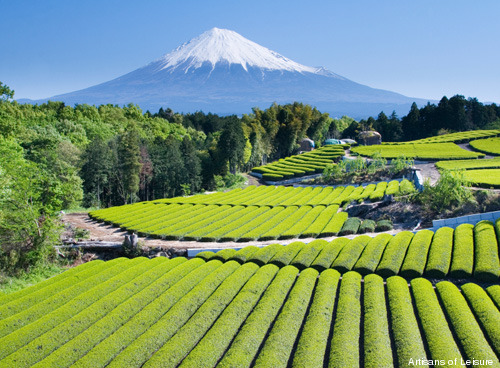

 MENU
MENU

